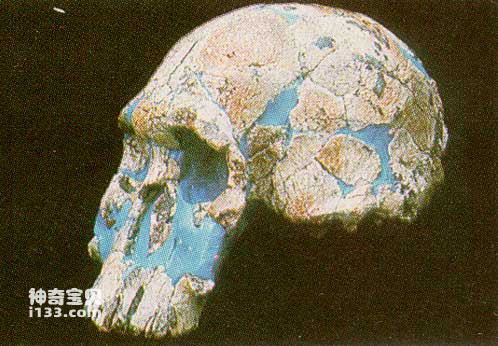The origin of the hominid family represented by Ardipithecus and Australopithecus was an evolutionary leap, marking the differentiation of the human family from other groups of higher primates. The next leap was a leap within the human family: a group closer to us in the family Hominidae, the genus Homo, appeared about 2.5 million years ago.

capable person
In 1960, just a year after Mary Leakey discovered the famous "East African Homo" (Australopithecus bonii) in Tanzania's Olduvai Gorge, her eldest son Jonathan Leakey (Richard Leakey) (Brother) discovered skull fragments of another type of human in Olduvai Canyon, along with associated mandibles, hand bones, and other clavicle, hand and foot bones. The skull fragment is relatively thin, indicating that the individual was lighter than all known australopithecines. Other bones support this speculation, especially the smaller cheek teeth. Most importantly, however, this new type showed a brain that was 50% larger than that of the australopithecines. After several more years of excavation and research, Jonathan and Louis Leakey, Richard's father and Mary's husband, concluded that although Australopithecus was part of our ancestors, these newly discovered fossils represented what would eventually become The early human type that gave rise to modern humans. Therefore, Louis Leakey named this new type Homo habilis, as the first early member of the genus Homo. The name "Homo habilis" was suggested to Lewis by Dart, meaning "dexterous men", as it is presumed that they made the tools found in this era.
Lewis's conclusion immediately aroused a vociferous disapproval among his colleagues. At that time, the anthropological community generally agreed with the standard definition of Homo proposed by the British anthropologist Sir Arthur Keith, which set the brain volume of Homo as equal to or exceeding 750 ml; however, these new types discovered by Oldoway His brain volume was only 650 milliliters, which was not yet across the boundary between human and ape brains that was considered at the time. However, the new type of skull is indeed more human-like than ape-like. How to face this contradiction? Lewis firmly believed in his point of view, and therefore proposed that the dividing line between human and ape brain size should be adjusted to 600 milliliters. This approach undoubtedly greatly increased the intensity of the heated debate on this issue. However, with the accumulation of new discoveries and the deepening of research, the view of Homo habilis as the earliest member of the genus Homo was finally accepted; moreover, it was later proved that the skull with a brain volume of 650 ml was only that of a child, and that the average brain of adult Homo habilis was The volume is close to 800 ml.
The emergence of the genus Homo is the first most important event that has occurred since the birth of the human family, and it is the first evolutionary leap that has occurred within the human family. Starting from Homo habilis, the earliest member of the genus Homo, humans began a truly "human-like" development process with rapid increase in brain size as the most basic characteristic and accompanied by evolution in many other aspects. It was within the genus Homo that humans evolved from Homo habilis to Homo erectus, and then passed through the early Homo sapiens stage and the late Homo sapiens stage, eventually forming the modern humans we have today with rich and colorful culture and superb technology. .
animal tags:
We created this article in conjunction with AI technology, then made sure it was fact-checked and edited by a Animals Top editor.